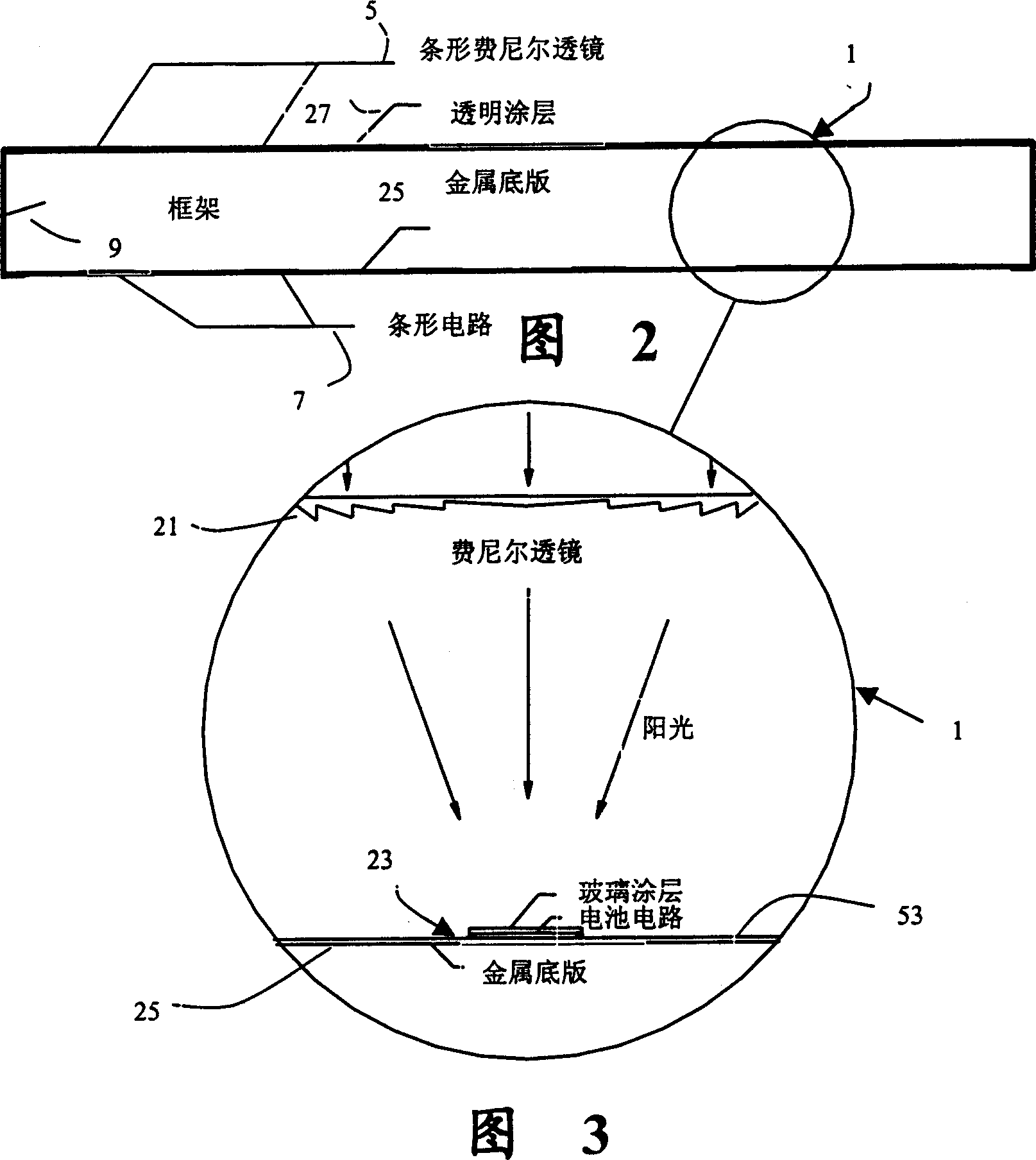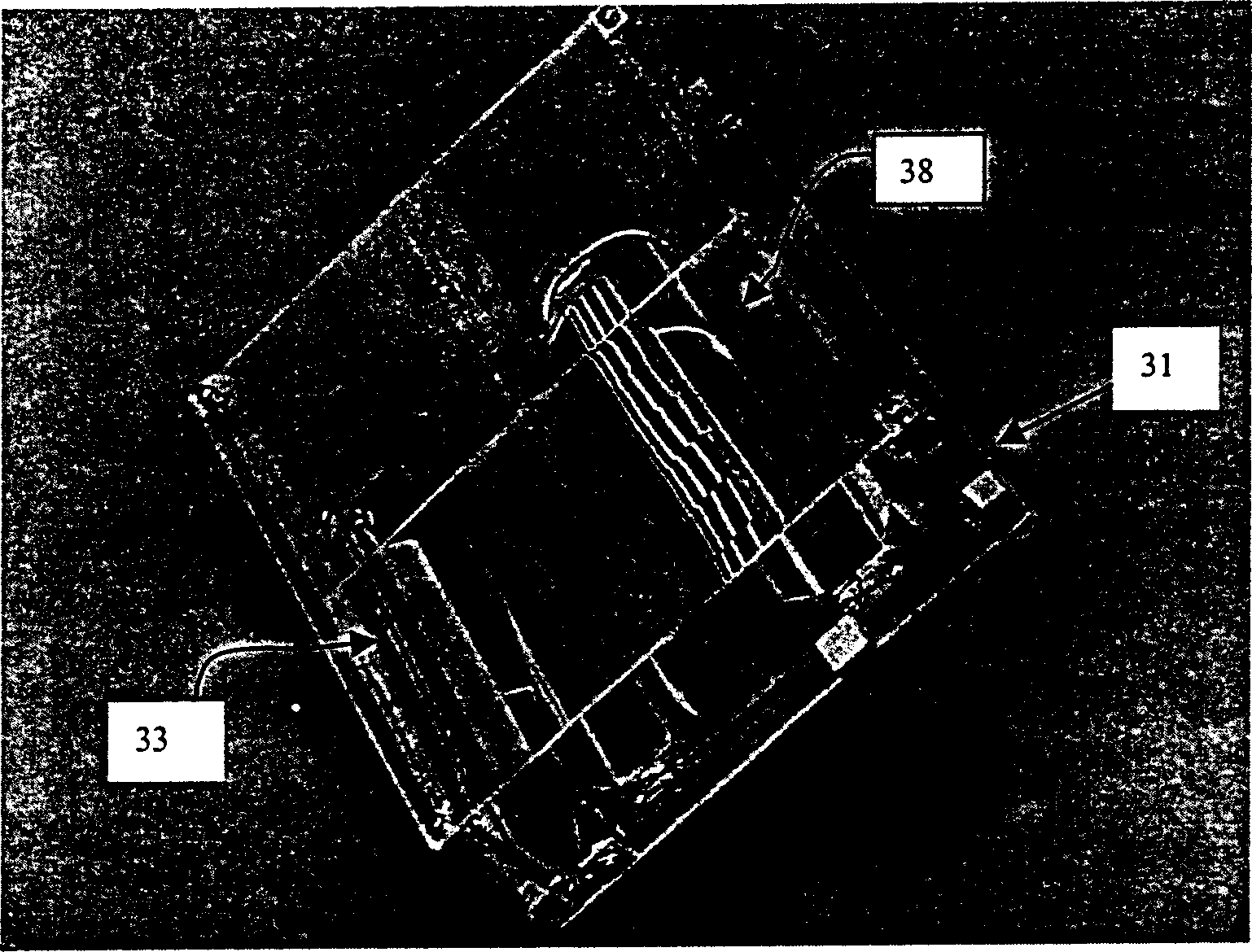Plane solar energy spotlight power supply module
A solar energy concentration and power module technology, applied in the field of solar cells, can solve the problems of planar solar cell modification, no further cost reduction, and unrealistic high investment, and achieve low tracking accuracy requirements, no difficulty, and low concentration rate Effect
- Summary
- Abstract
- Description
- Claims
- Application Information
AI Technical Summary
Problems solved by technology
Method used
Image
Examples
Embodiment Construction
[0053] figure 1 , 2, 3, and 8 show a preferred planar solar concentrating power supply module 1 . figure 1 It is a top view of the planar solar concentrating module 1 of the present invention. An array 3 of strip-shaped Fresnel lenses 5 produces focused solar radiation that falls on an aligned strip-shaped photoelectric conversion circuit array. Figure 2 is figure 1 The cross section of the planar solar concentrator module 1 . The cross section is perpendicular to the focused rays produced by the lens and also perpendicular to the length of the circuit. FIG. 3 is a partially enlarged view of FIG. 2 , showing a single lens 21 and a circuit unit 23 in more detail.
[0054] The preferred device described is exemplary and the dimensions are not limited to the specifications given below. For example, a preferred device may be 25" x 40" x 3.25" (thick). The dimensions described are exemplary and are similar to 75W planar modules produced by Siemens, Kyocera, and Solarex. All of...
PUM
 Login to View More
Login to View More Abstract
Description
Claims
Application Information
 Login to View More
Login to View More - R&D Engineer
- R&D Manager
- IP Professional
- Industry Leading Data Capabilities
- Powerful AI technology
- Patent DNA Extraction
Browse by: Latest US Patents, China's latest patents, Technical Efficacy Thesaurus, Application Domain, Technology Topic, Popular Technical Reports.
© 2024 PatSnap. All rights reserved.Legal|Privacy policy|Modern Slavery Act Transparency Statement|Sitemap|About US| Contact US: help@patsnap.com










